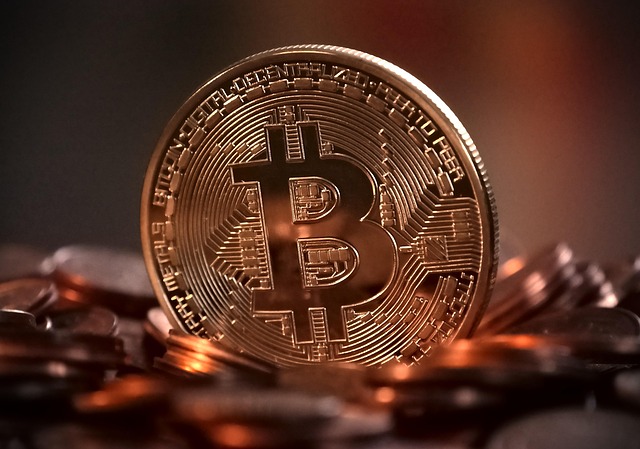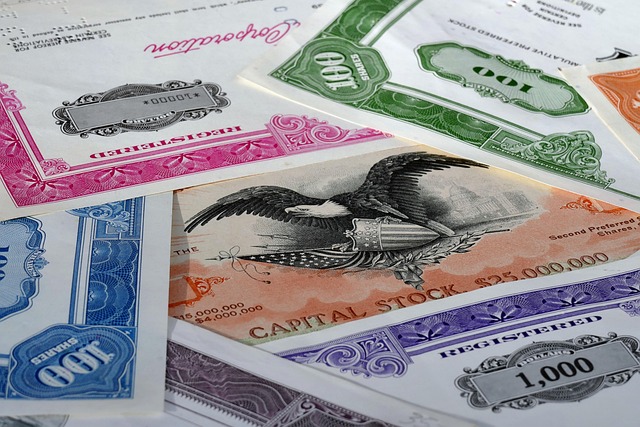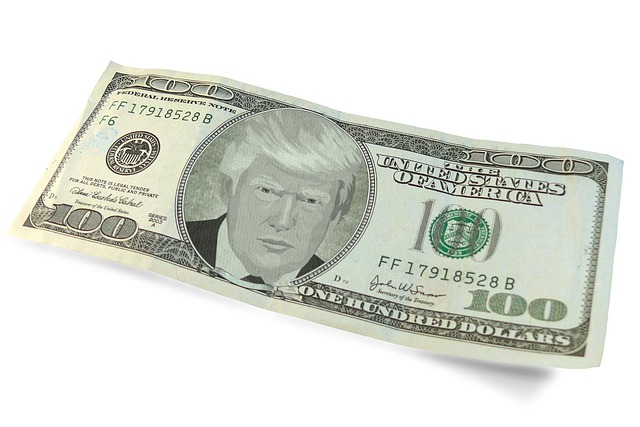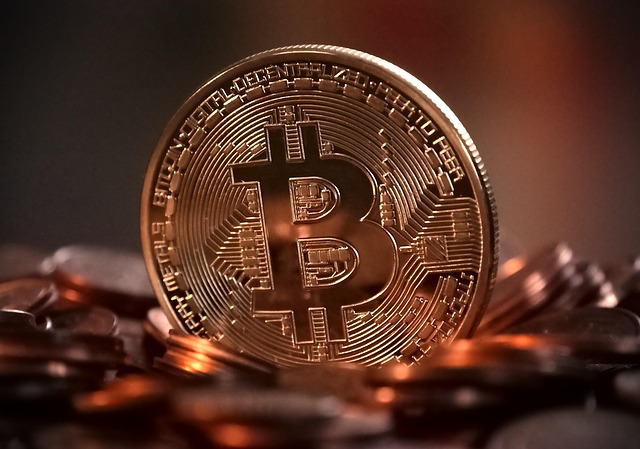Strike’s Mallers to head firm seeking superior Bitcoin play to MSTR
Twenty One Capital, a new Bitcoin treasury company led by Strike founder Jack Mallers with the support of Tether, SoftBank and Cantor Fitzgerald, is looking to supplant Michael Saylor’s Strategy to become the “superior vehicle for investors seeking capital-efficient Bitcoin exposure.”Twenty One revealed it plans to launch with 42,000 Bitcoin (BTC) (worth $3.9 billion) with roughly 23,950 BTC coming from Tether, 10,500 BTC from Softbank and 7,000 BTC from Bitfinex, which will be converted into equity at $10 per share, according to an April 23 statement.The firm is seeking a public listing via a blank-check merger with Cantor Equity Partners and will trade under the ticker XXI on the Nasdaq once it finalizes an agreement with investors to raise $585 million through convertible bonds and equity financing.“Our mission is simple: to become the most successful company in Bitcoin, the most valuable financial opportunity of our time. We’re not here to beat the market, we’re here to build a new one,” said Mallers, the founder and CEO of Bitcoin payments-focused firm Strike.“A public stock, built by Bitcoiners, for Bitcoiners.”Twenty One specifically compared its business model to Strategy’s in an investor presentation to the US Securities and Exchange Commission, claiming it is potentially a “superior vehicle for investors seeking capital-efficient Bitcoin exposure.”It claimed that Strategy’s ability to create shareholder value through future Bitcoin purchases will be limited because the firm — which holds 534,741 BTC — would need to make even larger investments to increase its Bitcoin Per Share, or BPS, thus diminishing the per-share dollar impact of future capital deployments.Twenty One said it would be a more “pure play” for investors seeking Bitcoin exposure with Bitcoin-native operations and more “flexibility” for strategic capital raises. Twenty One Capital’s comparison of its Bitcoin treasury plan with that of Strategy’s. Source: SECA launch of 42,000 Bitcoin would make Twenty One the third-largest corporate Bitcoin holder, trailing only Strategy and Bitcoin mining firm MARA Holdings, which holds 47,600 BTC, according to BitcoinTreasuries.NET data.Twenty One plans to do more than just stack BitcoinTwenty One also intends to build out several Bitcoin-focused offerings, including Bitcoin debt and equity products, an advisory service, a lending platform and an educational platform.“Twenty One’s mission will be to accelerate Bitcoin adoption and Bitcoin literacy at both institutional and retail levels,” the firm said.Related: Bitcoin ETF inflows top 500 times 2025 average in ‘significant deviation’The firm will also partner with industry players to host Bitcoin conferences.Twenty One Capital’s three-stage business plan. Source: SECThe news sparked a massive 54.2% price rally in Cantor Equity Partners (CEP) shares to $16.50 on April 23 and has risen another 25.1% in after-hours, Google Finance data shows. CEP will convert to XXI once the $585 million agreement is completed.The venture strengthens Tether’s ties with Cantor, which manages US Treasury reserves backing Tether’s USDT, which boasts a market cap of $145.3 billion. Cantor also owns a 5% stake in the stablecoin issuer.Twenty One will be majority-owned by Tether and crypto exchange Bitfinex, while Japanese investment holding firm SoftBank will own a “significant” minority share.Magazine: Ethereum maxis should become ‘assholes’ to win TradFi tokenization race
US President’s planned dinner for TRUMP memecoin holders triggers 52% price surge — Will it last?
Official Trump (TRUMP) jumped 52% on April 23 after the announcement of an exclusive in-person dinner for the top tokenholders with US President Donald Trump. For some crypto advocates, this marks the end of the bear market, especially as Bitcoin (BTC) bounced back above $93,000, but others raise suspicions on how sustainable the TRUMP memecoin rally really is.From a purely performance perspective, the Official Trump (TRUMP) memecoin has been a disappointment. After soaring above $75 on launch day, its gains quickly disappeared as investors noticed the high concentration of tokens and the short-term vesting period. At first sight, it is difficult to justify TRUMP’s current market capitalization of $2.6 billion, given that 80% of the supply was allocated to founders and entities controlled by Trump.Official Trump (TRUMP) market capitalization, USD. Source: CoinMarketCapFor comparison, well-established projects such as Arbitrum (ARB), Jupiter (JUP), and Maker (MKR) hold a capitalization below $1.6 billion. Those token valuations derive from buybacks using treasury reserves or direct benefits in staking and DeFi mechanisms. For instance, Arbitrum, a leading Ethereum layer-2 scaling solution, holds $2.4 billion in Total Value Locked (TVL). Jupiter, the leading decentralized exchange (DEX) on Solana, boasts $2.3 billion in deposits and has accrued $76.6 million in fees over the past 30 days, according to DefiLlama data. Meanwhile, Sky (formerly Maker), the project behind the extremely successful DAI stablecoin, holds $5.9 billion TVL and $28.6 million in 30-day fees.TRUMP still ranks in the top 10 for trading activityBesides being listed on major exchanges, including Binance, Bybit, OKX, Coinbase, Upbit, and Kraken, and often promoted on social media by Trump, the memecoin holds an impressive share in derivatives markets. Notably, its futures open interest stands at $700 million, a top-10 overall.TRUMP futures aggregate open interest, USD. Source: CoinGlassEstablished projects with market capitalizations over $6 billion, such as Chainlink (LINK), Litecoin (LTC), and Polkadot (DOT) have smaller futures open interest than TRUMP. Still, while demand for futures markets allows larger traders to take part in the action, it does not necessarily imply optimism as longs (buyers) and shorts (sellers) are matched at all times.Even though TRUMP is currently trading 84% below its all-time high, it remains a top-10 token in terms of volume. In fact, excluding the stablecoins, only 4 cryptocurrencies surpassed TRUMP’s impressive $3.84 billion 24-hour turnover, according to CoinGecko data.24-hour USD trading volume ranking. Source: CoinGlass / CointelegraphDespite the huge trading activity, a single promotional event with US President Trump is unlikely to create lasting demand for the TRUMP memecoin, putting the current $13.50 price tag in check. Unless the project eases investors’ concerns about token unlocks, there is hardly a way to justify the 50% premium versus cryptocurrencies that offer utility and perspectives of growth.It is worth noting that Shiba Inu (SHIB), another memecoin with no real utility, presently trades at a $8 billion market capitalization, hence one could easily argue that a token officially supported by the sitting US President is worth far more, paving the way for $30 or higher price targets for TRUMP.This article is for general information purposes and is not intended to be and should not be taken as legal or investment advice. The views, thoughts, and opinions expressed here are the author’s alone and do not necessarily reflect or represent the views and opinions of Cointelegraph.
Bretton Woods institutions must reorient, US Treasury secretary says
United States Treasury Secretary Scott Bessent recently called for “Bretton Woods institutions,” such as the International Monetary Fund (IMF), to reorient themselves, a signal that the global monetary order could be shifting.Speaking at the Institute of International Finance (IIF) on April 23, Bessent called on the IMF and the World Bank to correct trade imbalances and protect the value of fiat currencies against exchange rate risk.”The Bretton Woods institutions must step back from their sprawling and unfocused agendas,” Bessent said. He added:”The IMF’s mission is to promote international monetary cooperation, facilitate the balanced growth of international trade, encourage economic growth, and discourage harmful policies like competitive exchange rate depreciation.”Bessent’s call for the IMF to correct trade imbalances between countries, specifically the US and China, coincides with a decline in the US dollar to three-year lows, $36 trillion in US government debt, and stiff economic competition from China.The Dollar Currency Index (DXY), a measure of the US dollar’s strength relative to other major fiat currencies, plunges to three-year lows. Source: TradingViewInvestor and hedge fund manager Ray Dalio argues that the world is experiencing a global macroeconomic shift that will upend the post-WWII financial order and eventually replace the US dollar as the global reserve currency, potentially with a digital form of money.Related: Trump tariffs reignite idea that Bitcoin could outlast US dollarThe Bretton Woods AgreementThe Bretton Woods Agreement was signed in 1944 and pegged the currencies of 44 countries to the value of the US dollar, which, at that point, was pegged to the value of gold at $35 per ounce.Eliminating complex foreign exchange risks between freely floating currencies to make global trade more efficient was the primary goal of the agreement.US President Richard Nixon delivers the infamous “Nixon shock” speech in August 1971, suspending the dollar’s convertibility to gold. Source: Richard Nixon Presidential LibraryIn August 1971, US President Richard Nixon announced the end of the dollar’s convertibility to gold — formally ending the Bretton Woods agreement in a move that was supposed to be temporary.“Your dollar will be worth just as much tomorrow as it does today,” Nixon incorrectly told Americans during his now-infamous address.The IMF and the World Bank, which were spawned from the Bretton Woods agreement, continue operating in an attempt to curb the effects of free-floating fiat currencies on the foreign exchange market.Bessent eyes stablecoins to protect the US dollar, BTC advocates have another ideaSpeaking at the White House Digital Asset Summit on March 7, Bessent said stablecoins could drive international demand for US dollars and US government debt instruments.Bessent added that the Trump administration will use stablecoins to protect the US dollar and its status as the global reserve currency.Bitcoin maximalist Max Keiser argued against this plan, predicting that gold-backed stablecoins would outcompete dollar-pegged tokens due to the desire for low-volatility, inflation-resistant money.The US dollar’s purchasing power has declined by over 90% since the year 1900. Source: Visual CapitalistIn March this year, BlackRock CEO Larry Fink wrote that the $36 trillion US national debt could drive investors to Bitcoin (BTC) as market participants start to see BTC as a better store of value than the US dollar.Bitwise executive Jeff Park voiced a similar prediction in February, focused on the effects of US President Donald Trump’s trade tariffs.The analyst wrote that the tumult from the ongoing trade war would cause worldwide inflation, which would cause individuals to seek alternative stores of value like Bitcoin, driving its price much higher in the long term.Magazine: Bitcoin payments are being undermined by centralized stablecoins
Top TRUMP tokenholders revealed? US President to host memecoin dinner
Some of the top holders of Donald Trump’s memecoin could come out of the shadows to appear for a dinner the US President is planning to host on May 22.As of April 23, the official Trump memecoin (TRUMP) website offered the opportunity for the “top 220” holders to meet the president in person in Washington, DC. At the time of publication, the guest list for the event was unclear, but the project stated any tokenholder who applied had to pass a background check, “can not be from a [Know Your Customer] watchlist country,” and could not have any additional guests.The memecoin, which the then-president-elect launched on Jan. 17 before taking office, has been heavily criticized by the crypto industry and lawmakers for potentially allowing foreign officials and interest groups to send money directly to the US President without proper disclosure and oversight. The team behind the project controls 80% of the total supply, while the identities of many of the other top tokenholders are mainly unknown.Top TRUMP memecoin holders as of April 23. Source: TRUMP tokenThe price of the TRUMP memecoin surged roughly 52% from $9.30 to $14.20 shortly after the dinner announcement. After the token launched on Jan. 17, the project’s market capitalization increased to roughly $15 billion before dropping 50% by Jan. 20.This is a developing story, and further information will be added as it becomes available.
Institutions break up with Ethereum but keep ETH on the hook
Ethereum is entering one of its most precarious periods since its inception. Usage on the base layer is plummeting, core metrics are nearing multi-year lows, and even co-founder Vitalik Buterin is proposing a radical architectural overhaul. Institutions aren’t waiting to see how it plays out. Blockchain data shows that long-time supporters such as Galaxy Digital and Paradigm have been slashing their Ether (ETH) holdings in recent weeks. So far in April, Ethereum’s base-layer activity has continued to collapse. Ethereum’s network fees are dropping, and inflation has been rising. Though layer-2 networks continue to develop, they’re cannibalizing the base layer’s value capture.But the story isn’t entirely about Ethereum’s collapse. Some whales are treating this downturn as a rare buying opportunity. Even those who are selling Ether can’t fully let it go.Ethereum gets dumped by institutions, but for how long?Institutions are dumping Ethereum, but it’s the ex they keep checking on. It’s not entirely out of the picture — just benched while they explore options like Solana (SOL).In recent weeks, blockchain analysts on the lookout for large crypto movements spotted several institutions moving ETH out of their tagged wallets, likely to sell. Lookonchain reported that Galaxy Digital deposited 65,600 ETH ($105.5 million) to Binance. The investment firm’s Ether exposure rose to as high as around 98,000 coins in February, but that has dropped to almost 68,000 ETH at the time of writing, Arkham data shows.Galaxy dumps Ether, but not all of it. Source: ArkhamGalaxy’s holdings may have declined in recent weeks, but they’re still higher compared to the start of the year. Its Ether holdings reflect a broader trend seen in Ethereum-based investment products. According to CoinShares, ETH funds saw $26.7 million in outflows over the past week, bringing total outflows to $772 million over eight weeks. However, year-to-date flows remain positive, with $215 million in net inflows. As Galaxy trimmed its Ether holdings, it also withdrew 752,240 SOL ($98.37 million), Lookonchain reported. Ethereum lost considerable momentum to Solana, which became the chain of choice during the memecoin casino frenzy that dominated much of 2024 and early 2025. While that eventually cooled amid rampant scams, bots and low-quality tokens, it also served as a technical showcase for Solana — proving its ability to process massive transaction volumes without major fee spikes or outages.Related: Pump.fun’s memecoin freak show may result in criminal charges: ExpertParadigm is another investor that has cut back on Ether. On April 21, it moved 5,500 ETH ($8.66 million) to Anchorage Digital. Paradigm transferred around 97,000 ETH (around $301.57 million) to Anchorage from January 2024, which was then moved to centralized exchanges, as onchain analyst EmberCN pointed out.Paradigm Capital held about 236,000 ETH in 2019 but holds 2,873 ETH on April 23. Source: Arkham“While institutional investors initially bought into the ‘ultra-sound money’ narrative, they’re now facing a reality where decreasing protocol revenue and weakening tokenomics create legitimate concerns,” Jayendra Jog, co-founder of Sei Labs, told Cointelegraph.Ethereum returns to net inflationary stateEther deflation has been an attractive selling point to Ethereum investors. It was integrated into the network through two major upgrades. First, the London hard fork of August 2021 introduced Ethereum Improvement Proposal 1559, which partially burns transaction fees. Then in the Merge upgrade of September 2022, Ethereum became a proof-of-stake network and drastically cut new token issuance.Ether’s supply consistently decreased following the Merge until April 2024, when Ether’s inflation began to accelerate. By early February 2025, the total ETH supply had surpassed its Merge level.Ether’s total supply is approximately 186,705 ETH higher than it was at the time of the Merge. Source: Ultra Sound MoneyPart of Ether’s inflation has been due to dropping fees, which results in less Ether burned. According to data from IntoTheBlock, Ethereum collected 1,873.52 ETH in fees from April 14 to April 21. That’s slightly higher than the 1,697.61 ETH in fees from the week starting on March 17, which was the lowest amount of fees collected (measured in ETH) since July 31, 2017.Ethereum base layer’s fees drop to 2017 levels. Source: IntoTheBlockButerin’s radical RISC-V proposal for EthereumOn April 20, Buterin proposed the RISC-V instruction set to substitute the current Ethereum Virtual Machine contract language, aiming to improve the speed and efficiency of the network’s execution layer. Some view the proposal as a white flag on the existing architecture.Source: Rooter“Vitalik’s RISC-V proposal is essentially an acknowledgment that the EVM’s fundamental architecture has reached its limits. When Ethereum’s founder proposes replacing the core VM that underpins the entire ecosystem, it signals not evolution but recognition of a design limitation that can’t be incrementally improved,” Jog said.Cointelegraph has reached out to the Ethereum Foundation and will update this article when it answers.Related: A guide to crypto trading bots: Analyzing strategies and performanceThe proposal follows a leadership shuffling in the Ethereum Foundation following rising complaints on the project’s direction. Could Ethereum be the one that got away?Part of Ethereum’s struggles has been attributed to its rollup-centric approach to scaling its network. The idea was to build layer-2 scaling networks that would offload the transactions from the base chain but still utilize its security. That has alleviated congestion issues during times of high network demand but has also created new problems of its own, such as dropping Ether burns and fragmentation of the Ethereum ecosystem.But there is an increased focus on layer-1 scaling, according to Tomasz Stańczak, the new co-executive director of the Ethereum Foundation. Stańczak said on X that the Ethereum Foundation will shift its focus to near-term goals, such as layer-1 scaling and layer-2 scaling support.Source: Tomasz StańczakSome whales have taken advantage of Ethereum’s cheaper price tag. On April 23, Lookonchain identified two wallets accumulating millions of dollars worth of ETH. The blockchain monitor identified another wallet on April 22 that has accumulated over $100 million in ETH since Feb. 15. Ether is currently down from the plus-$4,000 it reached in December but rose over 10% on April 23 to over $1,800. In a recent client letter, Standard Chartered Bank slashed its 2025 price estimate for Ether from $10,000. However, for whales accumulating at current levels, upside potential remains, as the bank still predicts a year-end target of $4,000.Geoff Kendrick, the bank’s head of digital assets research, attributed the more cautious outlook to Ethereum’s structural decline, noting that the layer-2 networks designed to improve scalability are now extracting much of the fee revenue once captured by the base layer.Magazine: What are native rollups? Full guide to Ethereum’s latest innovation
What are spot Solana ETFs with staking? Canada’s crypto innovation explained
What are spot Solana ETFs and why are they important? A spot Solana ETF is an exchange-traded fund that holds Solana (SOL) tokens directly, providing investors real-time exposure to the asset’s market price. Rather than using complex trading platforms or crypto wallets, you can access Solana via a regulated financial product traded on a traditional stock exchange. The value of Solana ETFs is directly tied to the open market price of SOL, offering a simple way to gain exposure to the blockchain’s performance without directly holding the asset. Unlike futures-based ETFs that use derivative contracts to speculate on Solana’s future prices, a spot ETF tracks the performance of the actual asset. This distinction is significant because futures products may face pricing inefficiencies, leading to performance mismatches over time. Spot ETFs are more transparent and directly reflect SOL’s real-time supply and demand on the Solana blockchain.Spot Solana ETFs mark a significant step toward mainstream crypto adoption. These products enable retail and institutional investors to gain exposure to the Solana ecosystem while operating within the bounds of securities regulations.Like spot Bitcoin and Ethereum ETFs, spot Solana exchange-traded funds are expected to expand market access and serve as another entry point to decentralized finance (DeFi) for traditional investors.Did you know? Spot ETFs aim to mirror an asset’s current price by directly holding the asset, while futures ETFs use derivative contracts to speculate on future price movements. Launch of spot Solana ETFs on the Toronto Stock Exchange On April 16, 2025, four spot Solana ETFs started trading on the Toronto Stock Exchange, following approval from the Ontario Securities Commission (OSC). With this, Canada became the first country to launch spot SOL ETFs with staking. The OSC granted approval to the spot Solana ETFs of four asset managers: 3iQ, Purpose, Evolve and CI Financial. Unlike products that only track Solana’s price, these funds hold SOL tokens, giving investors direct ownership of the asset. The funds are secured via institutional-grade cold storage custody. Each fund tracks a distinct Solana-related index, offering diverse strategies with onchain asset backing. Despite their structural differences, these ETFs are all designed for long-term investment, reflecting the issuers’ strong belief in Solana’s future in DeFi.By incorporating staking, these spot Solana ETFs provide an active way for investors to earn returns in the cryptocurrency market, all within a regulatory framework and secure, institutional-grade custody services.These ETFs enable staking through a partnership with TD Bank, allowing the SOL they hold to actively support and secure the Solana network. In return, the network issues staking rewards, which can be passed on to investors. Since Solana typically offers higher staking yields than Ethereum, this structure may translate into greater potential returns for investors. How does staking boost returns for Solana ETF investors? By offering staking, these spot Solana ETFs may boost returns for investors by an estimated 2%-3.5% annually, in addition to the performance of the underlying SOL. The ETFs generate yield by working with staking partners that delegate up to 50% of the fund’s assets for staking. Staking rewards generated by the ETF are typically shared between shareholders and the fund manager, with the specific allocation varying depending on the ETF issuer.Management fees of these spot Solana ETFs vary from 0.15% to 1%, with some providers offering fee waivers during the initial launch phase. After two days of trading, the combined assets under management for the four ETFs total about $73.5 million.Staking Solana may yield higher returns than staking Ether (ETH). The ETFs intend to pass these additional rewards on to investors, potentially reducing the long-term cost of owning the ETF.Here is a comparison between the various spot Solana ETFs with staking approved in Canada:Cathie Wood’s ARK Invest has incorporated staked Solana into its ARKW and ARKF ETFs, with both funds now holding shares of Canada’s 3iQ Solana Staking ETF (SOLQ).Did you know? Altcoin ETFs track the prices of one or more cryptocurrencies other than Bitcoin (BTC). They diversify investor exposure within the cryptocurrency market, as various altcoins exhibit different price behaviors and underlying strengths. How Canada’s spot Solana ETFs unlock passive income opportunities Canada offering spot Solana ETFs with staking is an innovative step. Existing SOL investment products, such as the crypto ETFs in Europe and the futures-based ETFs in the US do not offer an opportunity to earn staking yield.Incorporating yield into a regulated crypto ETF structure addresses a long-standing demand from investors and asset managers interested in proof-of-stake (PoS) networks like Solana and Ethereum. As staking is central to these tokens’ value, its inclusion enables SOL ETFs to offer a passive income component, making them more appealing to traditional investors seeking income-generating opportunities. The OSC’s approval of the staking feature for spot Solana ETFs may boost SOL’s position. However, staking carries risks, such as potential losses from validator penalties (slashing) or network disruptions, which could affect returns.Nonetheless, this approval reinforces Canada’s pioneering role in crypto ETF innovation, having launched the world’s first spot Bitcoin and Ethereum ETFs in 2021, ahead of many other jurisdictions. By allowing staking rewards in spot Solana ETFs, Canadian regulators have signalled a growing acceptance of crypto-powered finance. Did you know? ETFs aren’t without risks. Market fluctuations can lead to losses, and tracking errors can cause an ETF’’s performance to differ from its benchmark index, affecting investor outcome. What Canada’s launch of Solana ETFs with staking means for pending SEC applications Canada’s decision provides alternative cryptocurrency investment choices for its investors and may serve as an example for other countries considering spot ETFs for cryptocurrencies other than Bitcoin.Despite a subdued global macroeconomic climate — partly shaped by trade tensions during Donald Trump’s presidency — Canada’s regulators have taken a proactive stance, embracing innovation in the digital asset space. The greenlighting of Solana ETFs with staking reflects a maturing approach to crypto policy and signals confidence in alternative layer-1 networks.Meanwhile, in the United States, anticipation is building. The launch of Solana futures on the Chicago Mercantile Exchange (CME) on March 17, 2025, is seen as a stepping stone toward a US spot ETF. The SEC is currently reviewing 72 crypto-related ETF applications as of April 21, covering a spectrum of assets from major altcoins like XRP (XRP) to memecoins like Dogecoin (DOGE), including proposals for leveraged and derivative products.As of April 21, 2025, the SEC is reviewing 72 crypto-related ETF applications, including derivatives. The filings range from major cap altcoins to memecoins and include leveraged products and options. The outcome of Canada’s pioneering approach may offer valuable insights to regulators and could potentially influence the SEC’s decisions regarding these filings.However, the SEC’s stance may differ significantly from Canada’s due to structural and regulatory complexities within the US financial system. Unlike Canada’s more unified regulatory framework, the US divides oversight between multiple agencies — including the SEC, CFTC, and state regulators — creating friction in crypto policymaking.Canada’s trailblazing move could nonetheless offer a valuable case study for US regulators. As markets await the SEC’s decisions, the key question remains whether Washington will follow Ottawa’s lead — or chart its own course and a slower timeline for non-Bitcoin spot ETFs.
Trump Media inks deal with Crypto.com for ‘Made in America’ ETFs
US President Donald Trump’s media conglomerate, Trump Media and Technology Group, has signed an agreement with crypto exchange Crypto.com to launch exchange-traded funds “with a Made in America focus.”Trump Media, which operates the social media site Truth Social, said on April 22 that it signed a binding agreement with Crypto.com and asset manager Yorkville America Digital to launch ETFs, which “are expected to comprise digital assets as well as securities with a Made in America focus spanning diverse industries such as energy.”The funds will launch through Trump Media’s decentralized finance brand, Truth.Fi, and will be available through Crypto.com’s broker-dealer, Foris Capital. The funds are expected to go live later in 2025, subject to regulatory approval. Trump Media plans to invest some of its cash reserves into the ETFs, which will be launched alongside a number of Truth.Fi Separately Managed Accounts. The US law firm Davis Polk will be advising on the development and launch of the products.The initiative is part of the firm’s financial services and fintech strategy, using up to $250 million custodied by Charles Schwab following a partnership agreement with the bank in January. The finalization of the agreement follows Trump Media and Crypto.com signing a non-binding deal in March.It’s set to be the latest crypto-related venture involving Trump and his family. The Trumps helped launch a crypto platform, World Liberty Financial, in October, which has a linked token and plans for a stablecoin.President Trump’s sons, Eric Trump and Donald Trump Jr., have also gone in on a crypto mining venture called American Bitcoin.Spot crypto ETFs rebounding Spot Bitcoin ETFs in the US have seen a turnaround in institutional interest, with more than $1 billion in aggregate inflows so far this week as crypto markets rebounded. Spot Bitcoin ETF flows turn positive. Source: CoinGlassRelated: Trump’s next crypto play will be Monopoly-style game — ReportIt comes after Bitcoin ETFs have been plagued by outflows over the past few weeks as the wider market entered a downturn, as Trump ramped up fears of a trade war with threats of tariffs, which were eventually implemented in early April.Meanwhile, Crypto.com’s native token, Cronos (CRO), has surged 12% after the company inked the deal with Trump Media, reaching $0.09. However, the exchange token remains down 90% from its 2021 all-time high of just under a dollar. Magazine: Altcoin season to hit in Q2? Mantra’s plan to win trust: Hodler’s Digest
Australia’s top court sides with Block Earner, dismisses financial regulator's suit
The Federal Court of Australia has sided with fintech firm Block Earner in an appeal against a ruling that found it was required to hold a financial services license for its now-discontinued crypto-related products. Block Earner’s crypto-linked fixed-yield earning product is not a financial product, or a managed investment scheme, and is not a derivative under the Corporations Act, Justices David O’Callaghan, Wendy Abraham and Catherine Button said in an April 22 judgment. The trio said Block Earner’s yield product couldn’t be classed as an investment or financial product because users loaned crypto under fixed terms for interest payments and didn’t pool contributions to generate further benefits. The terms and conditions framed it as a loan, and users had no exposure to the firm’s business outside of the agreed interest rate, they added.A court has dismissed the legal proceedings against Block Earner and ordered Australia’s financial regulator to pay costs. Source: ASICThe Australian Securities and Investment Commission (ASIC), which first brought the case, has been ordered by the court to pay costs for the proceedings, including appeals. The regulator said in an April 22 press release that it is currently “considering this decision.”Block Earner’s chief commercial officer, James Coombes, told Cointelegraph the court decision brings clarity that crypto assets shouldn’t be treated differently from other asset classes when applying existing laws. “Our product was simply defined as one where customers would lend their assets to us for a fixed return, there was no share in the upside of the pool of assets and as such no Managed Investment Scheme existed,” he said. “The fact that it included crypto assets should not alter that simple definition, and I believe this case forms a bedrock for ambitious brands around Australia to build from.”An ASIC spokesperson declined further comment.Earner product won’t make a return Despite the win in court, Block Earner will not be reviving its Earner product after axing it when legal proceedings began, but Coombes said that “crypto-backed loans products remain the core focus of the company.”“Regulation going forward is not an easy task, and we empathise with the regulators on this point,” Coombes added. “We hope a collaborative process can bring about positive change.” Related: Australia outlines crypto regulation plan, promises action on debankingASIC launched civil legal proceedings in November 2022, arguing that Block Earner needed an Australian Financial Services License to offer its three crypto-linked fixed-yield earning products.In February 2024, an Australian court initially found the fintech firm would need a financial services license to operate its crypto yield-bearing products. Another June 2024 ruling released Block Earner from any financial penalties because it had “acted honestly” and pursued its legal opinions before launching the products, which ASIC appealed.Magazine: SEC’s U-turn on crypto leaves key questions unanswered
Bitdeer secures $60M to boost Bitcoin ASIC production amid record hashrate
Bitcoin mining firm Bitdeer secured $60 million in loans to ramp up its Bitcoin ASIC manufacturing efforts as global mining competition intensifies amid record-breaking network hashrates.According to its annual report, Bitdeer entered a loan agreement in April with affiliate firm Matrixport, a crypto financial services company founded by Bitdeer’s chairman, Jihan Wu.The facility offers up to $200 million, backed by Bitdeer’s Sealminer hardware, with a floating interest rate of 9% plus market benchmarks. As of April 21, Bitdeer had drawn $43 million from the credit line.Source: Bitdeer’s Annual ReportThe latest funding adds to a $17 million unsecured loan obtained in January, alongside previous capital raises totaling $572.5 million via convertible notes in 2024. Bitdeer also issued over six million shares, raising nearly $119 million in equity markets this year.Related: Top Bitcoin miners produced nearly $800M of BTC in Q1 2025Bitdeer acquires 101 MW Alberta power projectIn February 2025, Bitdeer acquired a fully licensed 101 megawatt (MW) gas-fired power project near Fox Creek, Alberta, for $21.7 million in cash, per the annual filing.The site, with potential to scale up to 1 gigawatt, includes all necessary permits for construction and a 99 MW grid connection. The power plant is set to be developed with an EPC partner and is expected to be operational by the fourth quarter of 2026.In March, the company also purchased 40 MW worth of liquid-cooled mining containers from Saiheat.More recently, it was reported that Bitdeer is expanding its self-mining operations and investing in United States-based production. The shift came in response to cooling demand for its mining hardware from other miners.“Our plan going forward is to prioritize our own self-mining,” Jeff LaBerge, Bitdeer’s head of capital markets and strategic initiatives, reportedly said. Additionally, on Feb. 28, 2025, Bitdeer launched a $20 million share repurchase program, effective through February 2026. To date, it has repurchased 1,056,500 Class A shares valued at about $12 million under this program.Related: American Bitcoin’s ambition is to dominate mining — Hut 8 CEOBitcoin hashrate surges while miner revenues shrinkBitdeer’s expansion comes as Bitcoin’s network computing power hit a record 1 sextillion hashes per second in early April, according to BitInfoCharts.Bitcoin hashrate. Source: BitInfoChartsA higher hashrate indicates that more miners (or more powerful machines) are competing to solve Bitcoin blocks. As competition rises, each individual miner’s chance of earning block rewards decreases, implying declining profitability.Further hurting miner revenue are low transaction fees. As of now, the average Bitcoin transaction fee hovers around $1, down from over $16 per transfer in April last year, according to YCharts.The low transaction fees and rising hashrate forced public miners to sell over 40% of their BTC production in March — the highest since late 2024.Firms like Hive, Bitfarms and Ionic Digital reportedly sold more than 100% of their monthly output.Magazine: Altcoin season to hit in Q2? Mantra’s plan to win trust: Hodler’s Digest, April 13 – 19
Gibraltar court ends 2-month freeze of 542M PLAY tokens amid legal dispute
The Supreme Court of Gibraltar has reversed its decision to freeze 542 million PLAY tokens in a court battle between two companies tied to the Web3 game-creation platform PLAY Network.In an April 17 judgment, Gibraltar Supreme Court Judge John Restano undid his earlier February freeze of the tokens, finding it could have hurt the value of the tokens and that the evidence filed was insufficient to continue the freeze.“Whilst there may be many reasons for the drop in value of the tokens, the evidence before the court suggests that these proceedings are a factor in that regard,” he wrote.US-based Ready Makers, which operates as Ready Games, and its founder, David Bennahum, have filed a legal dispute against its Gibraltar-based subsidiary, Ready Maker (Gibraltar) Limited, and its CEO, Christina Macedon. The suit claims she took over the firm and its PLAY token that is used as a reward on the PLAY Network.Ready Games won a freeze of the tokens in February, with the Gibraltar-based Ready Maker, operating as PLAY Network, handing them over to a court-appointed custodian.The 542 million PLAY tokens are nearly two-thirds of its current circulating supply and are worth around $2.6 million. The token’s price has plummeted by over 97% since it launched in December, according to CoinGecko.PLAY has sunk over the past three months to trade for fractions of a cent. Source: CoinGeckoJudge Restano said the evidence filed by Ready Games for the freeze was “far from impressive, and raises more questions than it answers.”He added he did “not consider that this is a case where the order should be re-granted in any event,” and cited Ready Games’ failure to disclose that it was in administrative dissolution at the time of filing for the token freeze, which he called “a significant omission.”Ready Games’ Bennahum told Cointelegraph that it has filed to lodge an appeal alongside “an urgent application with the Gibraltar Court of Appeal asking them to either stay the discharge of the original injunction or grant a new injunction” so the tokens could again be frozen pending the appeal’s outcome.He added that his company disagreed with the court’s decision to lift the token freeze, saying that the Gibraltar-based firm was in an “alarming state.”Ready Maker is just a “token launch vehicle” — Ready Games founderBennahum reiterated an earlier claim that the US-based Ready Games created Ready Maker in Gibraltar with the US company’s intellectual property and funding “specifically to serve as our token launch vehicle.”“We maintain that Ms. Macedo and associated parties have wrongfully seized control of this entity and its assets,” he said. Judge Restano said in his judgment that Macedo disputed Bennahum’s claim, and regulatory filings purportedly show she is the sole controller and ultimate beneficial owner of the Gibraltar-based firm.Related: Crypto gaming has mixed Q1 as deals jump, investment totals dip: DappRadar Ready Games had said in a February statement that its court action was to “recover control” of the Gibraltar company.It added that a Delaware business court issued a temporary restraining order that required Ready Gibraltar to restore Ready Games’ access to the firm’s tech stack, such as “GitHub repositories, cloud systems, and domain accounts.”Web3 Gamer: Riskiest, most ‘addictive’ crypto game of 2025, PIXEL goes multi-game










